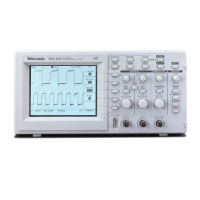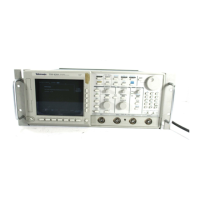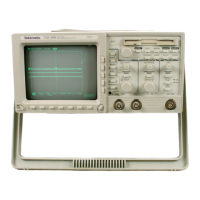Product Description
TDS 500D, TDS 600B, & TDS 700D User Manual
1–3
Differences by Model
Table 1–1 lists some key TDS features and relates them to the different
TDS models that this manual covers.
Table 1–1: Key Features and differences of models
Feature 520D 540D 580D 620B 644B 680B 684B 724D 754D 784D 794D
No. of channels 2+2
1
4 4 2 + 2
1
4 2 + 2
1
4 2+2
1
4 4 4
Digitizing rate, max. 2 GS/s 2 GS/s 4 GS/s 2.5 GS/s 5 GS/s 2 GS/s 2 GS/s 4 GS/s 4 GS/s
No. of Channels. @
maximum rate
1 2 1 2 4 2 4 1 2 1
Analog Bandwidth 500 MHz 1 GHz 500 MHz 1 GHz 500 MHz 1 GHz 2 GHz
Record Lengths, max. To 50K/Channel
2
To 15K/Channel To 50K/Channel
2
DPO Acquisitions Yes No Yes
Hi Res Acquisitions Yes No Yes
Advanced DSP Math
3
Opt. 2F Std.
4
Communication Signal
Analyzer
Opt. 2C No Opt. 2C
Reference Receiver Opt. 3C and 4C No Opt. 3C and 4C No
Storage, Floppy Disk Std.
I/0 includes RS–232
and Centronics
5
Opt. 13 Std.
4
iomega Zip Drive sup-
port
Yes No Yes
Input Impedance 50 and 1 M 50
only
Display Mono Color Mono Color
1
Two plus Two channel operation allows two of four channels to be displayed simultaneously. Channels not displayed can
be used to couple a triggering signal to the oscilloscope.
2
These TDS models can be purchased with Option 1M or Option 2M, which add longer record length settings (up to
2 Mb/channel). See Option 1M and Option 2M on page A–2.
3
Advanced digital signal processing provides FFTs, integrals, and derivatives of waveforms. See Option 2F on page A–3.
4
Std. denotes a standard product feature as opposed to a feature included as part of an option.
5
GPIB I/O included with all models.
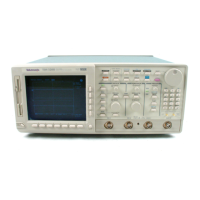
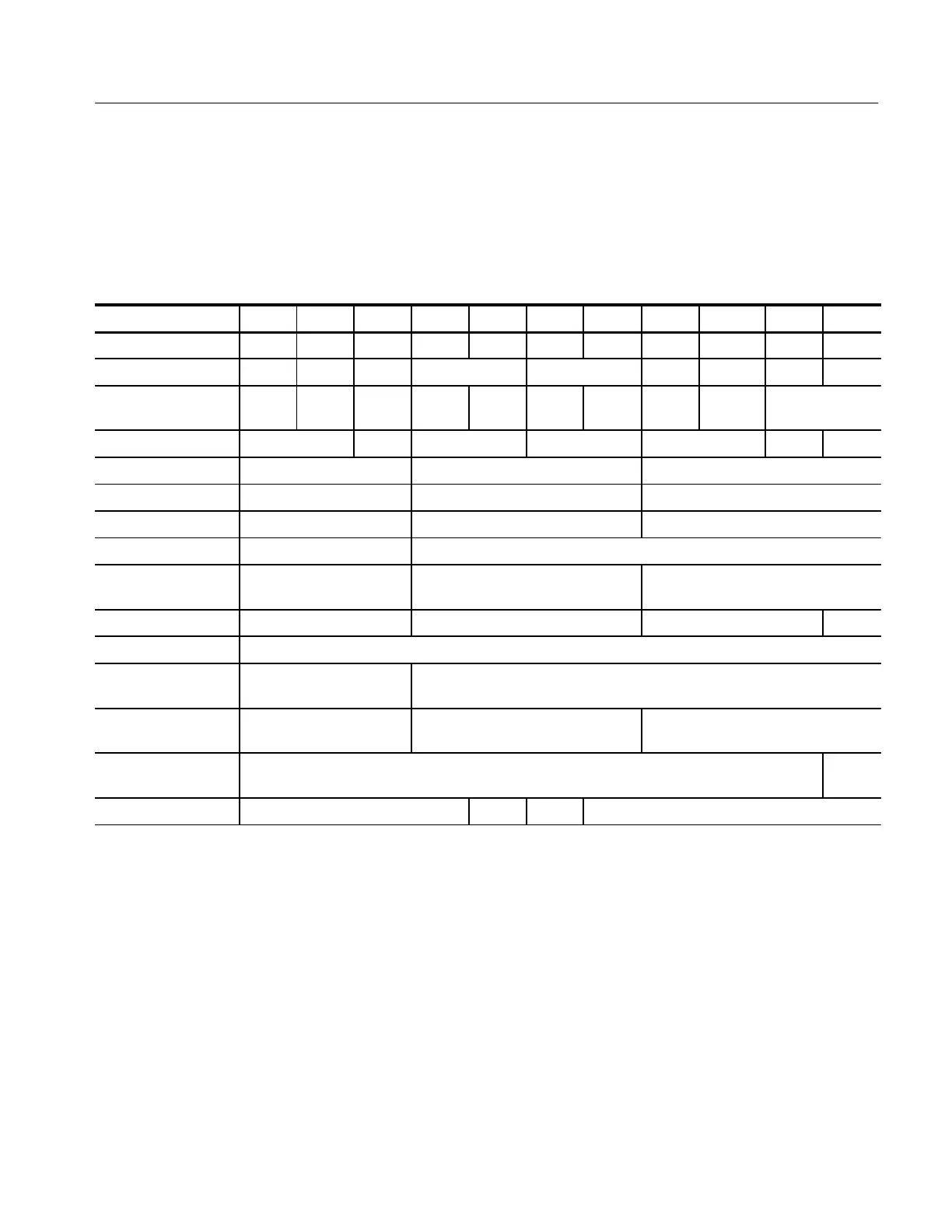